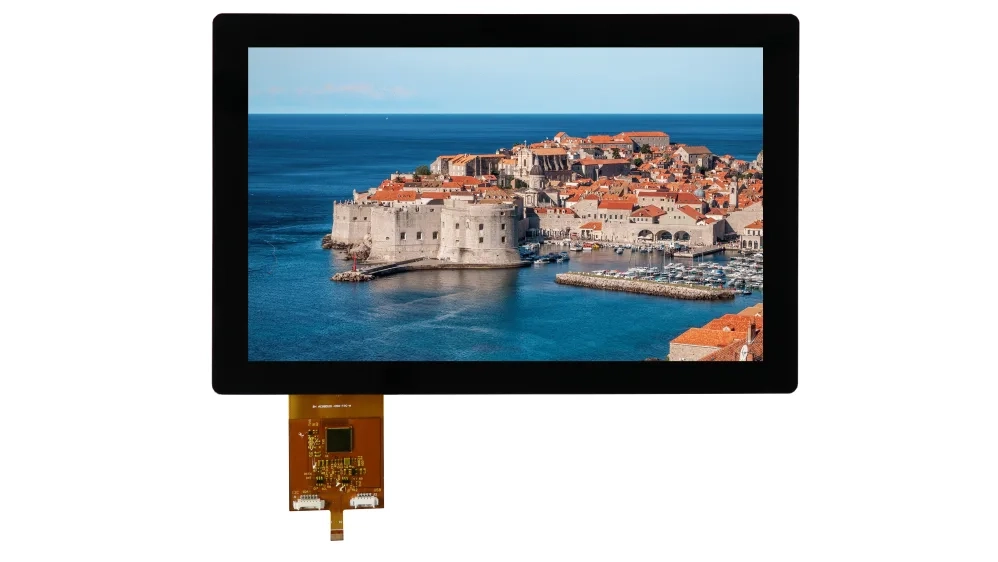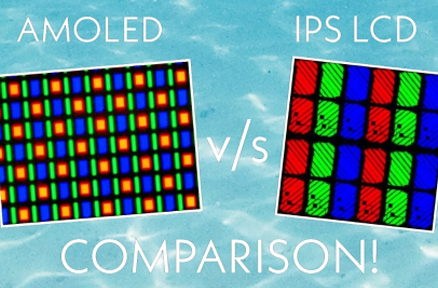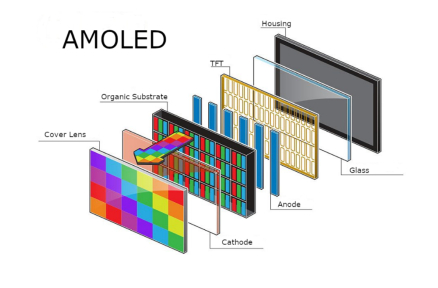In today’s fast-changing world of screen tech, TFT (Thin Film Transistor) display screens shine as a key part for bright, clear visuals. These screens are active matrix LCDs powered by tiny transistors. They’re made of neatly lined-up dots, lines, planes, and backlights that light up when electric current moves liquid crystal molecules. TFT displays run everything from factory control panels to medical imaging tools, giving sharp, colorful pictures that fit the needs of modern uses.
Now, the standards for TFT displays are higher than ever. Industries want smarter, more trustworthy options. Things like refresh rates—say, 144Hz for smooth motion in busy settings—are super important. Whether you’re a B2B buyer picking displays for factory automation or healthcare tools, knowing these key specs helps you choose screens that boost work speed and accuracy.
At Kadi Display, a top Shenzhen-based maker with over 20 years of know-how in TFT LCD solutions, we focus on tweaking these specs to match your project’s needs. Let’s jump into the top parameters of TFT display screens to help you pick wisely.

Ⅰ. The Important Parameters of TFT Display Screen—Resolution
Resolution is the foundation of a TFT display’s picture quality. It shows how many pixels form the screen’s image. It’s a grid of pixels across and up—more pixels mean clearer, sharper visuals.
Understanding TFT Resolution for Optimal Clarity
For most TFT displays, the go-to standard is 1920×1080 pixels, also called Full HD or 1080P. This resolution gives a great mix of clear images and good performance. It’s perfect for industrial HMI (Human-Machine Interface) panels. Operators can read small text or see detailed charts without eye strain. In medical uses, higher resolutions like 2560×1440 (2K or Quad HD) or 3840×2160 (4K Ultra HD) are getting popular. They allow super-precise images in surgical monitors where every detail matters.
Why High Resolution Matters for Your Project
Low resolution causes blurry, pixelated images. This can make things hard to use in fast-moving places like factory floors or clinics. Kadi Display’s TFT LCD modules offer custom pixel setups to work with your systems. In 2023, we finished over 100 custom projects, matching resolutions to client needs for smooth use. For factory dashboards, 1080P often works well. But 2K or 4K is better for data visuals or multi-screen setups. Choosing high resolution improves picture quality and keeps your investment ready for the future.
Ⅱ. The Important Parameters of TFT Display Screen—Size
Size is a big deal for TFT displays—not just for looks, but for how they work and feel. Measured as the diagonal length of the active screen area in inches, size shapes the viewing experience.
Choosing the Right TFT Screen Size for Your Application
For the same aspect ratio, like 16:9 for widescreen TFTs, the viewable area grows with the square of the diagonal. A 10-inch screen gives about four times the area of a 5-inch one, great for big control panels. Factories use small 4.3-inch screens for built-in machines or larger 15.6-inch to 21.5-inch ones for workstation monitors. Medical displays often use 7- to 12-inch sizes for easy-to-move diagnostic carts. Automotive dashboards go for 5- to 10-inch TFTs for clear views.
Optimizing Size for Performance and Ergonomics
Picking the right size affects mounting, power use, and how users interact. Too-big screens can crowd small spaces, while too-small ones are hard to read. Kadi Display’s 10,000㎡ Shenzhen factory is great at sizing screens precisely, backed by ISO13485-certified processes for medical-grade trust. Slim bezels make the viewable area bigger in multi-screen setups. Our HDMI/DSI skills ensure the best size for uses like smart home controls or IoT devices, serving over 2,000 customers worldwide.
Your next TFT display project needs expert help. Check out Kadi Display’s custom TFT solutions to find the perfect size and speed up setup.

Ⅲ. The Important Parameters of TFT Display Screen—Response Time
Response time is key for TFT displays. It measures how fast pixels switch from one color to another, usually in milliseconds (ms). It’s the speed at which the screen reacts to signals, vital for clear visuals in fast-moving scenes.
Why Low Response Time Enhances TFT Performance
A quick response time—ideally under 5ms for gray-to-gray switches—keeps visuals smooth. It stops “ghosting” in busy uses. In factory automation, where watching conveyor belts or robotic arms in real-time is crucial, slow response can delay alerts and cause safety risks. Medical ultrasound tools need fast pixel changes to catch quick body movements without blur.
Ensuring Reliable Response with Advanced Testing
Things like temperature or voltage changes can affect response. Specs tested across operating ranges (-20°C to 70°C for factory use) are important. Kadi Display’s TFT modules hit response times as low as 3ms, thanks to advanced transistor setups and tuned backlighting, certified under IATF16949 automotive standards. Our 100+ workers use AOI (Automated Optical Inspection) machines to keep quality steady. For setups like training simulators, pair fast response with high refresh rates for trustworthiness.
Investing in quick response time boosts work output and cuts mistakes. Kadi tweaks this spec for serial TFT displays, ensuring smooth results from prototype to production.
Ⅳ. The Important Parameters of TFT Display Screen—Contrast Ratio
Contrast ratio shows the difference between a TFT display’s brightest whites and darkest blacks. It affects image depth and how clear things look.
Achieving Superior Visuals with High Contrast Ratios
Shown as a ratio, like 1000:1, higher numbers make pictures look rich, with clear light and dark areas. This is key in dim places like operating rooms or night-shift factory floors. Kadi’s industrial-grade TFTs reach up to 1500:1 with anti-glare coatings, paired with brightness of 300-500 nits for indoor use or 1000 nits for bright settings.
Applications and Benefits of Optimized Contrast
Low contrast makes images look faded, hurting accuracy in tasks like medicine labeling or X-ray checks. Our ISO9001 standards ensure steady ratios across batches, using edge-lit LED backlights for evenness. In gaming or training video tools, setting contrast to 80-100% boosts immersion. B2B buyers like how this works with touch overlays in our HMI solutions for easy-to-use interfaces.
Upgrade your setups with Kadi’s high-contrast TFT displays—check our lineup today.
Ⅴ. The Important Parameters of TFT Display Screen—HDR
HDR (High Dynamic Range) takes TFT displays to the next level. It adjusts contrast, color accuracy, and brightness based on what’s on the screen, beating standard dynamic range (SDR).
Unlocking Enhanced Visuals with HDR Technology
HDR gives “bright blacks”—shadows with clear details—perfect for medical imaging or security monitoring. In surgical video feeds, HDR shows hidden tissue layers that SDR might miss. It needs gear like wider color gamuts (DCI-P3 coverage >90%) and local dimming zones, which raise costs but pay off with better data clarity.
Implementing HDR for Future-Proof Displays
Kadi Display’s OLED-hybrid TFT options support HDR10, working with HDMI interfaces for easy setup in AV systems. Our 10,000㎡ workshop makes panels certified under ISO14001 for eco-friendly production. Check HDR support via VESA DisplayHDR ratings, like 400 for entry-level. In automotive dashboards or smart factory AR overlays, HDR stands out with peak brightness at 600 nits, controlled by precise transistors to cut backlight bleed.
Using HDR prepares your displays for 8K videos or AI-powered diagnostics. With Kadi’s full support, you tap into HDR’s power easily.
Ready to add top-tier TFT displays? Contact our experts for custom quotes—we’re here to light up your success.
FAQ
What is the ideal resolution for an industrial TFT display?
For most factory uses, 1920×1080 (1080P) gives great clarity. For detailed medical imaging, go for 4K (3840×2160) for fine details.
How does screen size impact TFT display performance?
Bigger sizes, like 15.6 inches, offer more viewing space but may use more power. Match size to mounting and user needs for easy use.
Why is low response time critical in TFT screens?
It cuts motion blur, ensuring real-time accuracy in automation controls or medical diagnostics—aim for under 5ms.
What contrast ratio should I target for medical TFT displays?
At least 1000:1 ensures clear views in dim procedures; pair with 400+ nits brightness for all lighting.
Does Kadi Display support HDR in their TFT modules?
Yes, our advanced TFT LCDs include HDR10 compatibility, boosting dynamic range for pro uses.
Partner with Kadi Display for Superior TFT Solutions
As a trusted B2B leader in Shenzhen, Kadi Display Technology Co., Ltd. delivers full TFT display solutions for factory and medical excellence. With 20+ years of know-how, ISO9001/13485 certifications, and a 10,000㎡ facility, we handle custom 7-21.5 inch panels (BOE/Tianma sourced) to full HMI assemblies—no MOQ needed.
Boost your projects today: Email Sales@sz-kadi.com or visit kadidisplay.com. Request a free consult and sample—let’s create displays that spark innovation!









